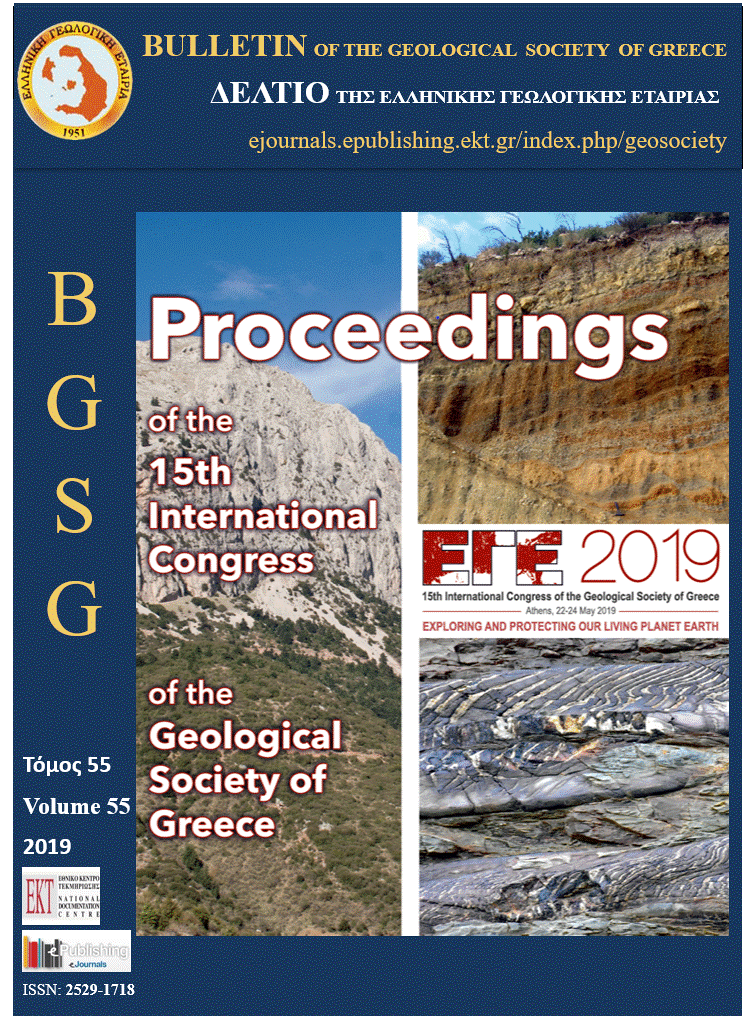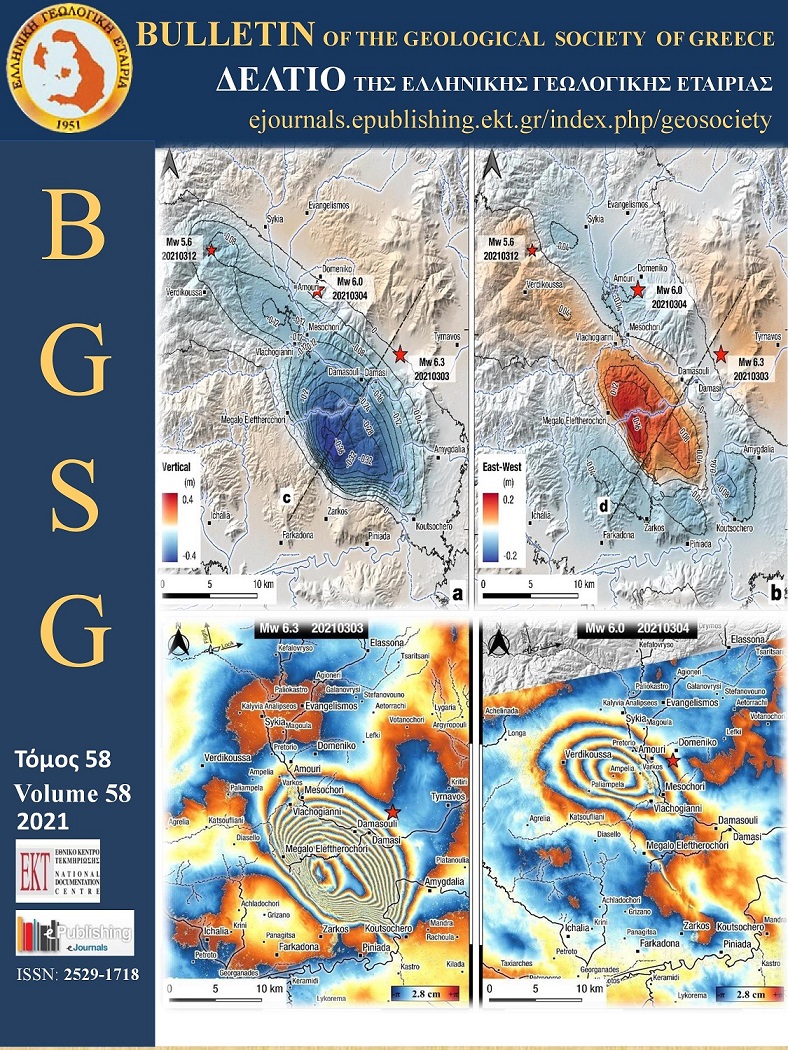Probabilistic Seismic Hazard Assessment (PSHA) for Lesvos Island Using the Logic Tree Approach

Περίληψη
We carry out a probabilistic seismic hazard assessment (PSHA) for Lesvos Island, in the northeastern Aegean Sea. Being the most populated island in the northern Aegean Sea and hosting the capital of the prefecture, its seismic potential has significant social-economic meaning. For the seismic hazard estimation, the newest version of the R-CRISIS module, which has high efficiency and flexibility in model selection, is used. We incorporate into the calculations eight (8) ground motion prediction equations (GMPEs). The measures used are peak ground acceleration, (PGA), peak ground velocity, (PGV), and spectral acceleration, (SA), at T=0.2 sec representative of the building stock. We calculate hazard curves for selected sites on the island, sampling the southern and northern parts: Mytilene, the capital, the village of Vrisa, Mithymna and Sigri. Hazard maps are also presented in terms of all three intensity measures, for a mean return period of 475 years (or 10% probability of exceedance in 50 years), assuming a Poisson process. Our results are comparable to the predictions of on-going EU hazard models, but higher than the provisions of the Greek Seismic Code. Finally, we perform disaggregation of hazard to depict the relative contribution of different earthquake sources and magnitudes to the results.
Λεπτομέρειες άρθρου
- Πώς να δημιουργήσετε Αναφορές
-
Vavlas, N., Kiratzi, A., Margaris, B., & Karakaisis, G. (2019). Probabilistic Seismic Hazard Assessment (PSHA) for Lesvos Island Using the Logic Tree Approach. Δελτίο της Ελληνικής Γεωλογικής Εταιρείας, 55(1), 109–136. https://doi.org/10.12681/bgsg.20705
- Ενότητα
- Γεωφυσική και Σεισμολογία

Αυτή η εργασία είναι αδειοδοτημένη υπό το CC Αναφορά Δημιουργού – Μη Εμπορική Χρήση 4.0.
Οι συγγραφείς θα πρέπει να είναι σύμφωνοι με τα παρακάτω: Οι συγγραφείς των άρθρων που δημοσιεύονται στο περιοδικό διατηρούν τα δικαιώματα πνευματικής ιδιοκτησίας επί των άρθρων τους, δίνοντας στο περιοδικό το δικαίωμα της πρώτης δημοσίευσης. Άρθρα που δημοσιεύονται στο περιοδικό διατίθενται με άδεια Creative Commons 4.0 Non Commercial και σύμφωνα με την οποία μπορούν να χρησιμοποιούνται ελεύθερα, με αναφορά στο/στη συγγραφέα και στην πρώτη δημοσίευση για μη κερδοσκοπικούς σκοπούς. Οι συγγραφείς μπορούν να: Μοιραστούν — αντιγράψουν και αναδιανέμουν το υλικό με κάθε μέσο και τρόπο, Προσαρμόσουν — αναμείξουν, τροποποιήσουν και δημιουργήσουν πάνω στο υλικό.



